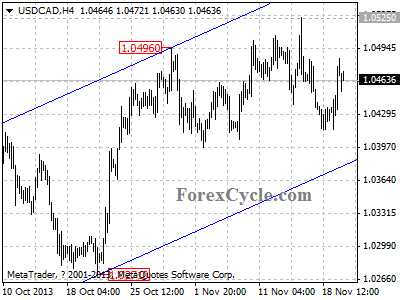By MoneyMorning.com.au
One of the things we like most about technology and innovation is that the path it takes is almost entirely unpredictable.
It’s far less predictable than investing where it’s possible to make pretty good educated guesses or forecasts about the future.
But within that realm of unpredictability is a problem for businesses.
A business has to predict the future and get it right. And unlike an investor who may have just a few thousand dollars at risk, if a business makes the wrong move it could put the entire future of the company at risk…
The fact is even the brightest businessmen and women can make wrong or muddle-headed decisions.
That happens in business all the time. It might be backing a dud product line or approving a completely inappropriate advertising campaign (boy, have we seen plenty of those).
Those things are usually just small fry and repairable. But what if the biggest mistake wasn’t by one business, but an entire industry? A mistake that involved failing to predict its own demise?
It may sound crazy, but that very thing could be on the verge of happening to the global pharmaceutical industry. They just can’t see it coming.
Blind to Their Own Demise
The thought about the end of big pharma struck us as we read an article in the Financial Times yesterday afternoon. The first paragraph set our brain whirring:
‘Global spending on prescription medicines will accelerate next year to exceed $1tn for the first time, fuelled by the launch of more innovative drugs and rising health expenditure in emerging markets led by China.‘
The article points out that the big drug companies have had a tough time in recent years.
After going through a ‘purple patch’ where it seemed as though they created a new blockbuster drug every year (Lipitor, Avastin, Viagra), the last few years have seen leaner times.
And as these blockbuster drugs came off patent, revenues dropped as generic alternatives appeared.
But now, despite the recent disappointing run it seems the drug companies have regained confidence. We wish them luck. That’s because at the current rate of progress, the whole healthcare industry could be about to change.
This is the Future of Medicine
We avidly follow the subject of new trends in medicine in our premium investment advisory, Revolutionary Tech Investor. It was the theme of the latest issue, in which we looked further into regenerative and personalised medicine.
These terms may be new to you. If so, in simple terms regenerative medicine means using specialised treatments to help repair and even rebuild certain body functions or even body parts.
And when we say rebuild, we mean that. The latest advancements in stem cell therapy mean that the medical profession can stimulate the body to regrow degenerated tissue. One of the biggest potential leaps forward is the treatment of osteoarthritis, which affects tens of millions of people worldwide.
In the near future it could be possible for physicians to inject stem cells into an affected area and for the stem cells to ‘instruct’ degenerated cartilage to repair itself. It may sound far-fetched and even impossible, but the technology is real.
Related to regenerative medicine is personalised medicine. The clue to this is in the name. As we wrote in the latest issue of Revolutionary Tech Investor, since the discovery of penicillin and other mass-produced drugs, medical treatment has become mostly generalised.
In other words, the prescribed drugs you get at the pharmacy are the same drugs everyone else gets. There’s limited personalisation of the treatment. The pharmacist slaps a label with your name on it on the side of the box or bottle and that’s it. That’s about as personal as it gets.
Turning Off Disease with ‘Nature’s Off Switch’
But the wheel turns. As we see it, the days of generalised medicine and big blockbuster drugs are almost over. The big drug companies may dream of a $1 trillion market. And they may get it.
But they should enjoy it while they can.
The future of medicine is in bespoke DNA-derived treatments. Scientists will develop treatments and preventative measures at the individual level. Scientists will analyse your DNA, which will reveal any diseases or ailments you could contract.
So rather than being a sitting duck for a deadly disease, it could be possible in the near future to delay or even prevent the disease from occurring.
If scientists can isolate a disease at the genetic level and then ‘turn off’ the gene using what we like to call ‘nature’s off switch’, it would revolutionise the treatment of illnesses. This could mean doctors treating you for a disease before you even get it.
We can’t say for sure, but we’re pretty certain that big pharma won’t welcome that kind of biotechnology. Instead of getting hooked on long-term medication, the future of medicine is in one-off DNA-driven treatments.
It may be too soon to trumpet the end of big pharma right now. But as a long-term investment proposition, big pharma stocks don’t make sense. The world of healthcare is about to take a major turn and big pharma will be left behind.
Cheers,
Kris+
PS. We explore the concept of regenerative and personalised medicine in more detail in Revolutionary Tech Investor. Our recent stock picks include a specialist 3D printing company that plans to do amazing things in the field of regenerative medicine, and a tiny Aussie biotech that has just received approval in the US to use its stem cell treatment on an unconventional type of patient…
Special Report: The ‘Wonder Weld’ That Could Triple Your Money
Join Money Morning on Google+

By MoneyMorning.com.au



















